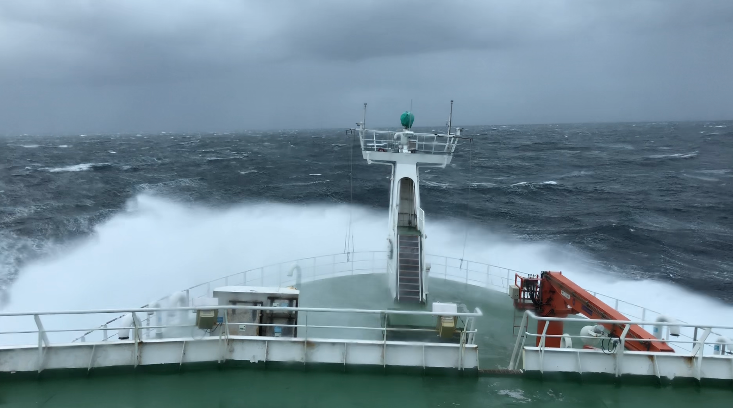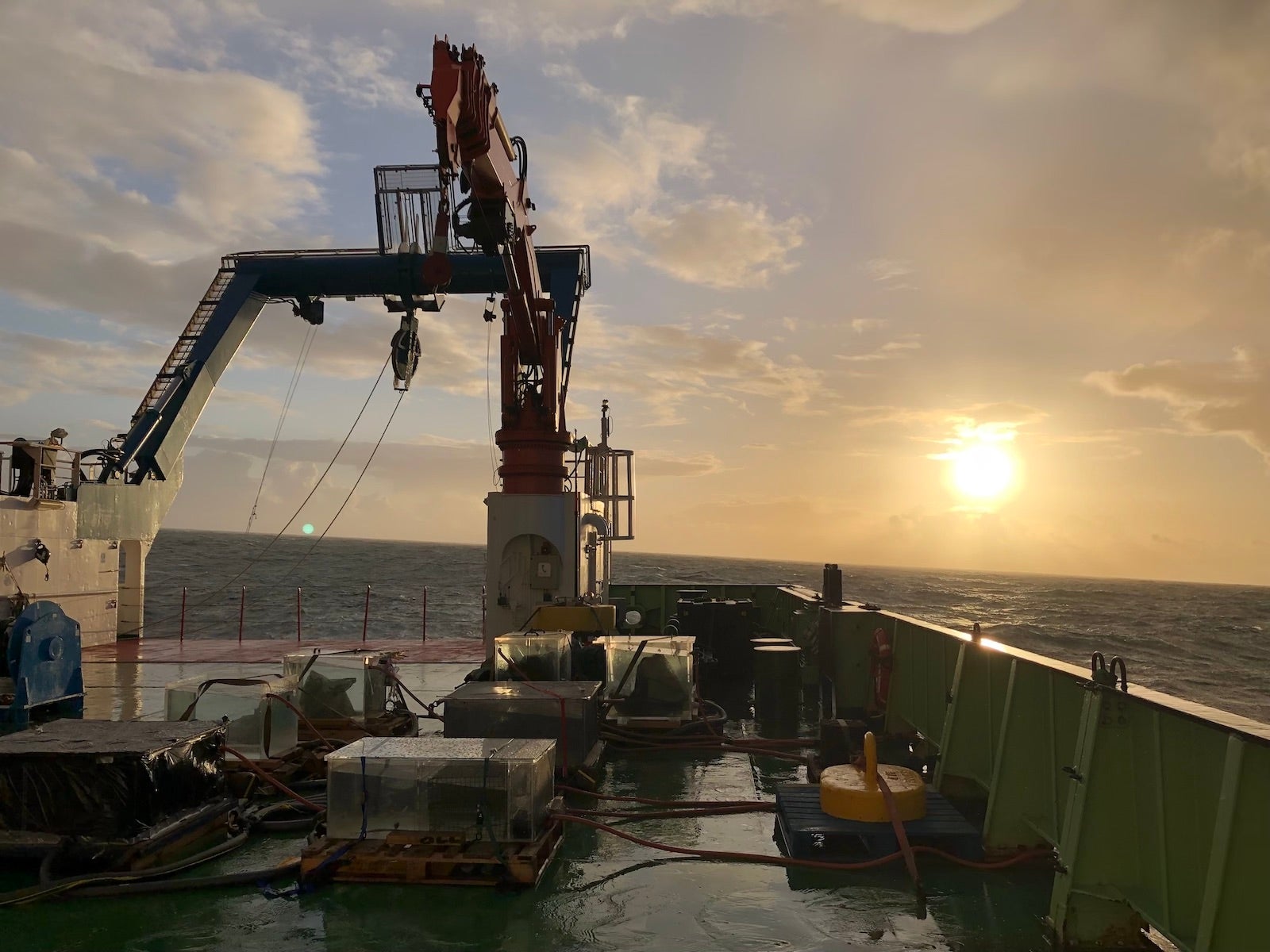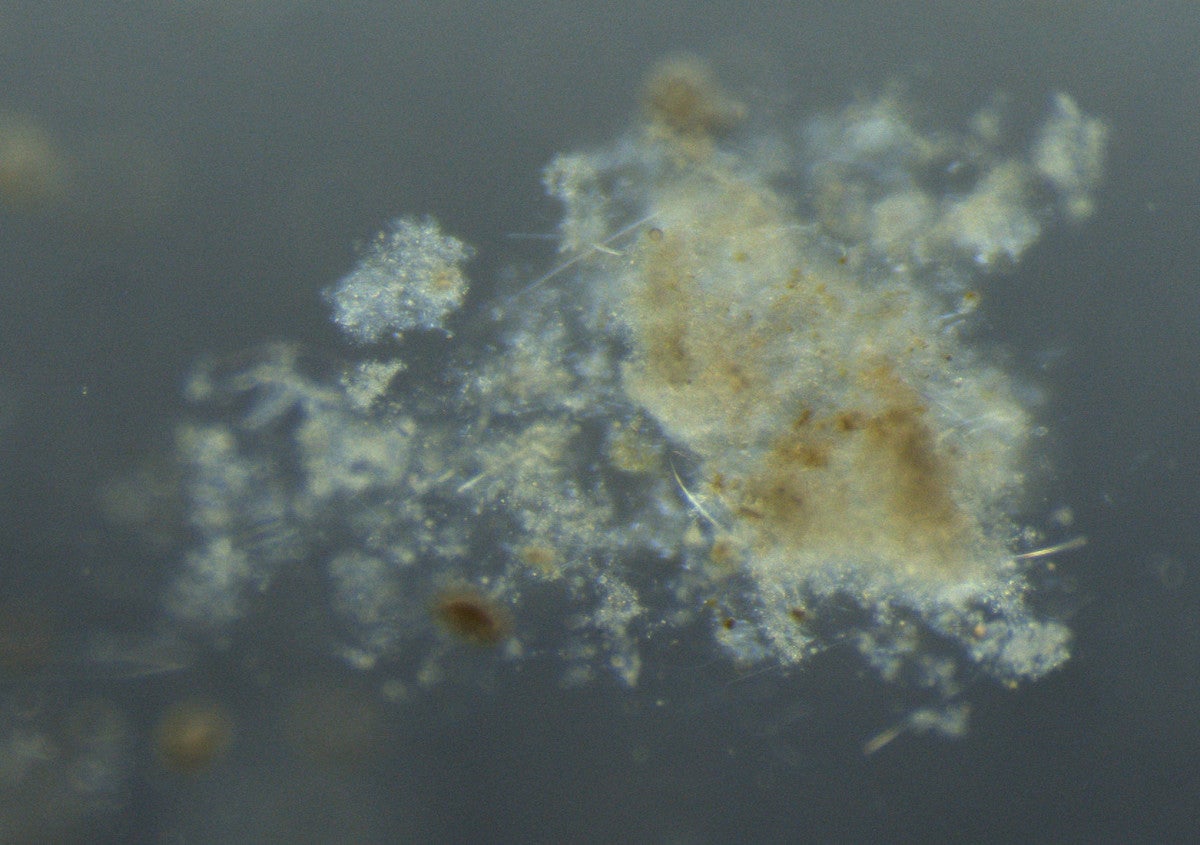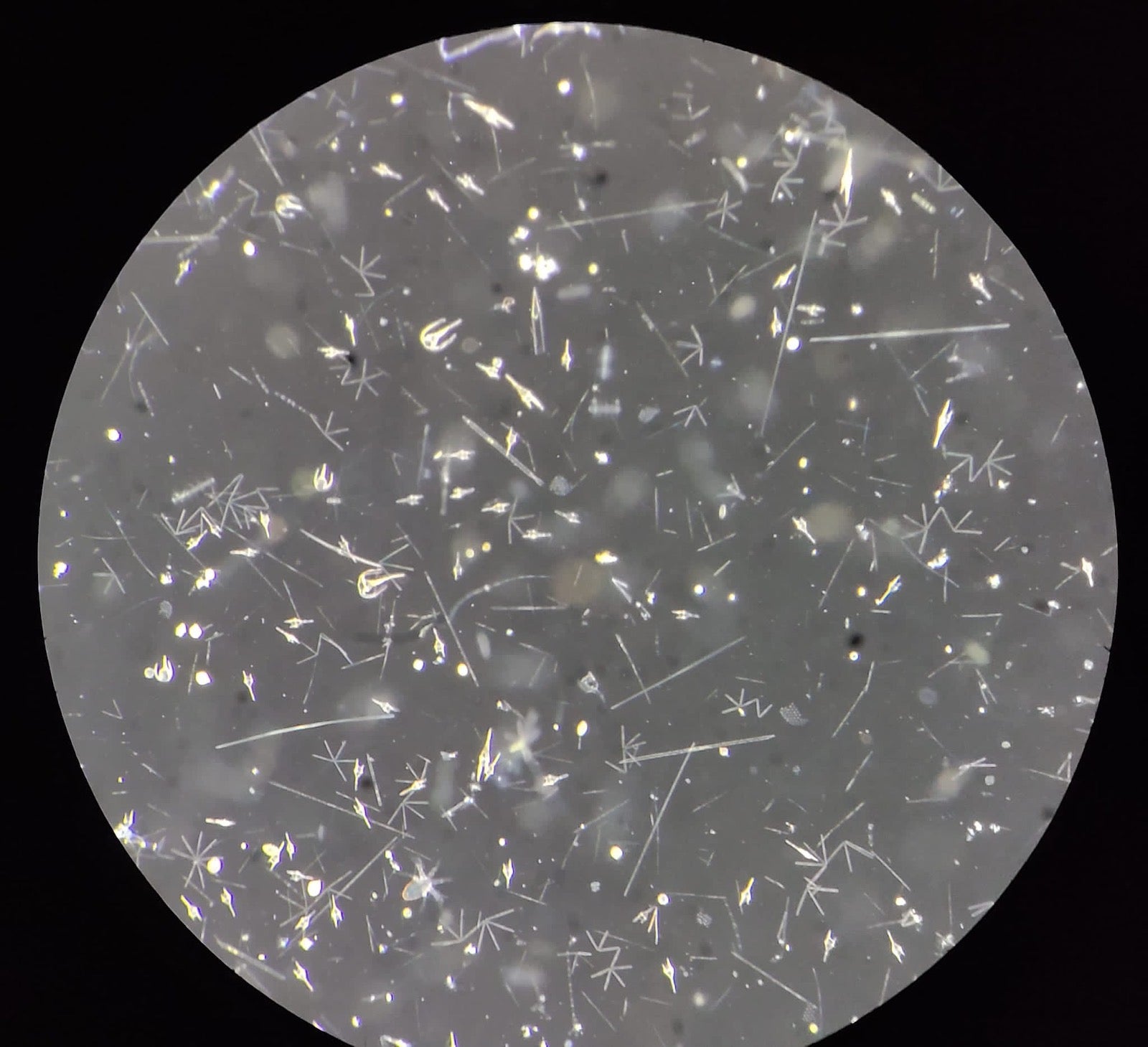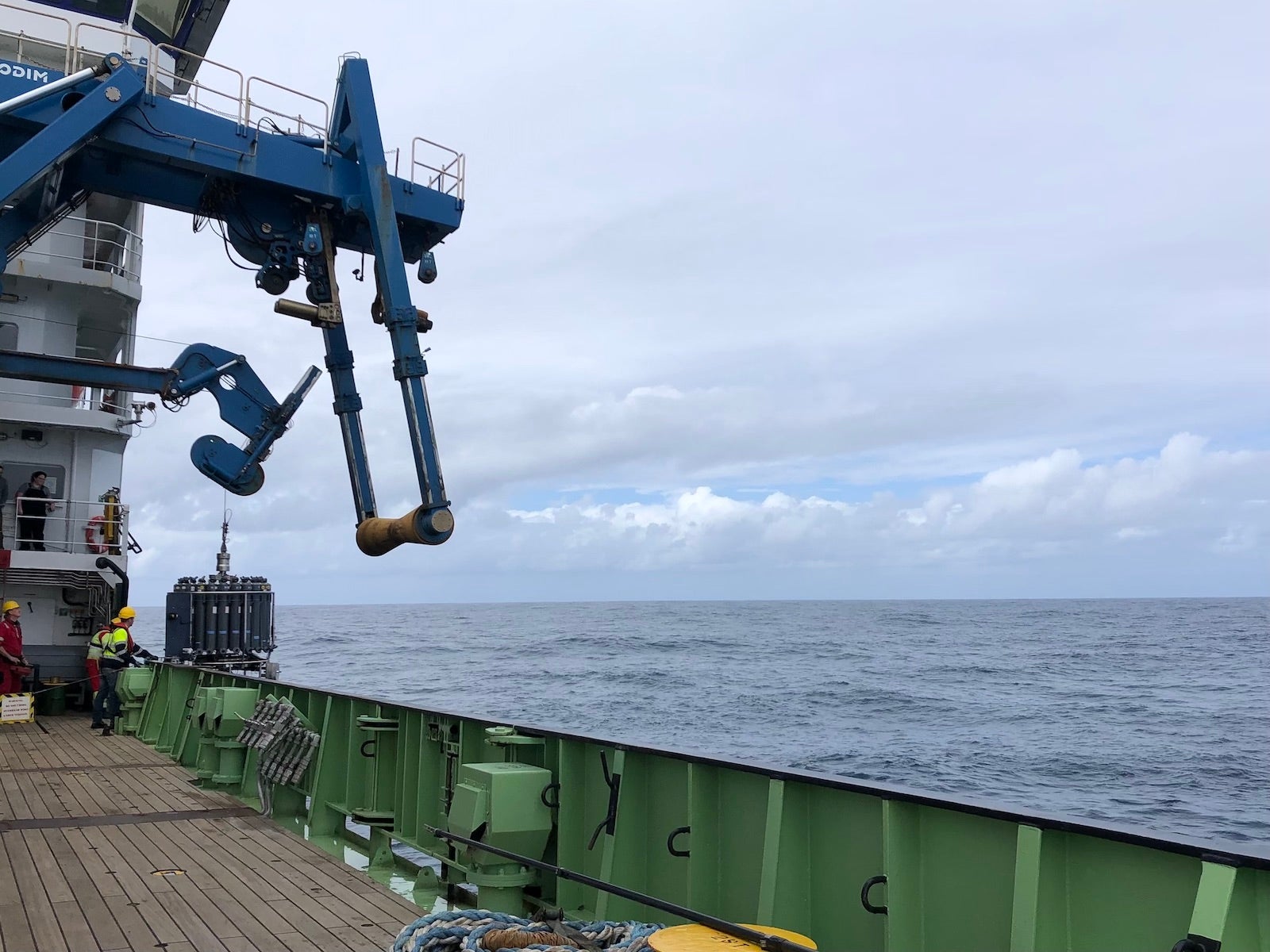May 24, 2021
This is the second in a series of posts by GSO Ph.D. candidate Diana Fontaine who is currently in the North Atlantic for the NASA EXPORTS project. You can find all of the posts here.
We are now past the mid-point of the NASA EXPORTS cruise aboard the Royal Research Ship James Cook, and as I’m writing this we’re on our third weather delay of the trip. Winds are consistently blowing at 50 knots with gusts over 65 knots at times. Waves have been about 20-plus feet which has made for a bumpy, yet exciting adventure! Unfortunately, this means we are unable to carry out our science during these weather days.
In fact, there were a couple of sediment traps, or sinking particle collectors, that the trap team were unable to recover because of the timing of the first storm. This led to a very stressful few weather days as the trap team patiently awaited recovering the traps before their batteries, and thus GPS locators, died. As a member of one of the water sampling teams, weather days meant we didn’t frantically sample from the CTD (Conductivity, Temperature, Depth) Rosette or filter water so we suddenly had lots of time on our hands!
Luckily, we had already done some experiments on the cruise which meant we had lots of data to enter. These experiments involve taking water samples from the CTD and incubating them under different light levels to stimulate what the cells experience in the natural environment. Our goal of these incubations is three-part: 1) to examine grazing rates of microzooplankton on phytoplankton, 2) to measure net primary production of phytoplankton and 3) to obtain samples for metatransciptomic sequencing (in other words, to get an ‘inside look’ at cellular function throughout the course of an incubation).
With these incubation experiments, we will be able to answer questions about how environmental variability at our study site affects grazing rates, phytoplankton growth and lower trophic level function—all important pieces to understand carbon export in the ocean.
The neat part about this cruise is that for the most part, we stay in one location and sample the water daily. This high-resolution temporal nature of the cruise enables us to explore how the water mass that we’re following changes with respect to environmental changes, such as the many storms we’ve experienced while out here. After the first storm, we took bets about how deep the mixed layer—the region in a water profile where environmental factors don’t change with depth—would get. Some of us were closer than others because the mixed layer surprisingly didn’t actually deepen that much.
While many of the groups’ science involves shore-based analyses, we have been lucky to get some images of phytoplankton using the Imaging Flow Cytobot and microscopy. The trap team has also taken some beautiful pictures of sinking particles captured by the trap gels. These images allow us to observe real-time changes in the phytoplankton community, such as witnessing a diatom soup or sinking aggregate particles as we progress through the cruise and under varying environmental conditions.
Despite the rough weather and newly developed lack of fresh vegetables, we have all stayed in good spirits and have patiently waited as the multiple storms passed by us. The weather days have given us time to think about how the biological observations we’ve made as a small group fit within the overall NASA EXPORTS project and enabled us to discuss future collaborations. We have had some fun social activities as well – bingo with some epic prizes and even a spa night.
Stay tuned for the next and final blog post about my experience in the North Atlantic with the NASA EXPORTS project.

